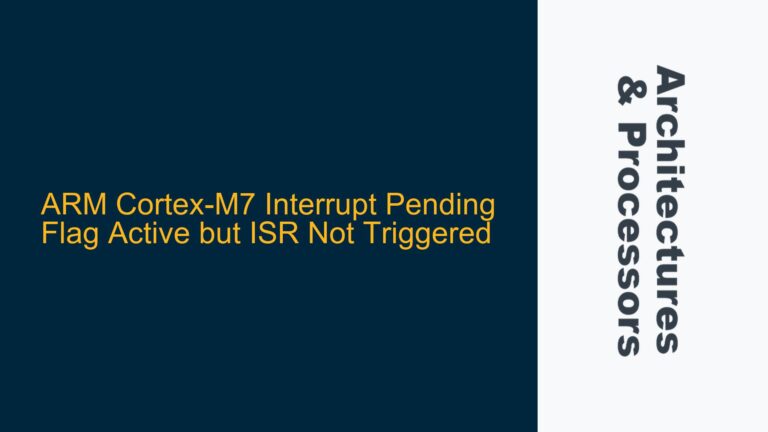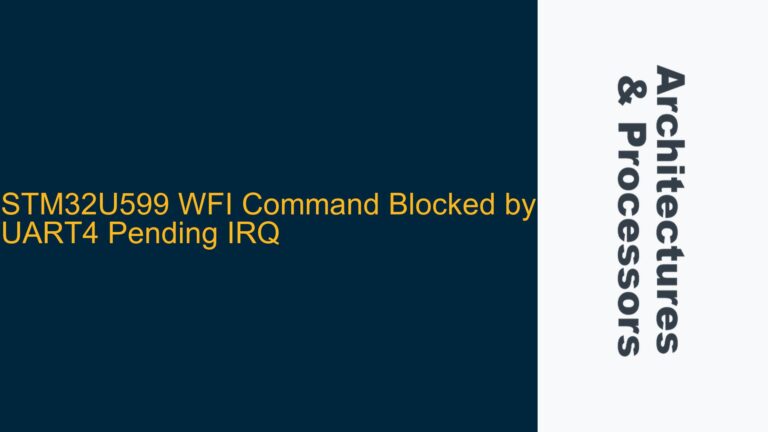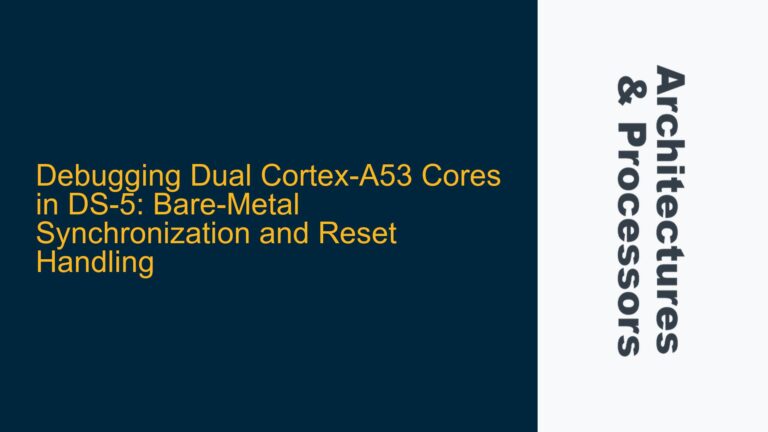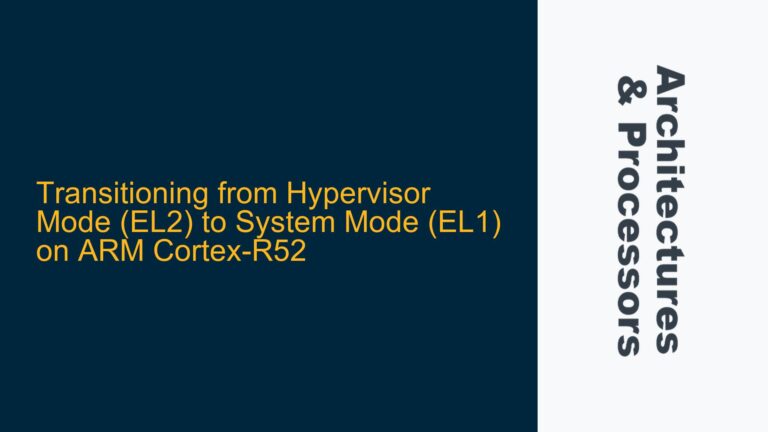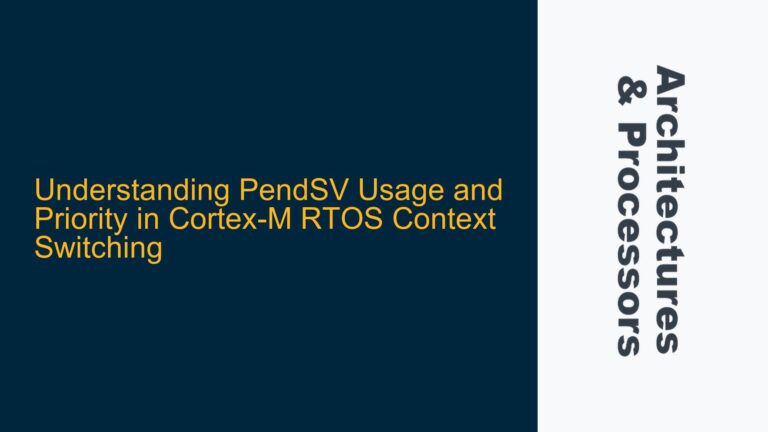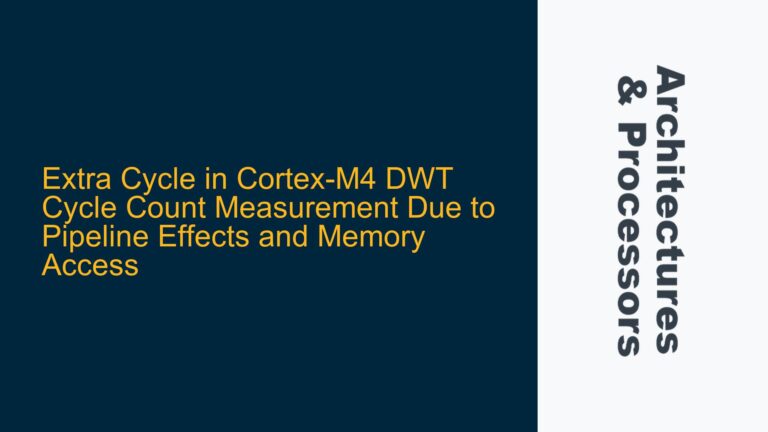ARM Cortex-M0 Integration Challenges for IP Testing
The implementation of an ARM Cortex-M0 as a test controller (TC) for verifying multiple IPs presents a unique set of challenges. The Cortex-M0, being a 32-bit RISC processor, is designed for low-power and cost-sensitive applications, making it an attractive choice for embedded systems. However, its simplicity and lack of advanced features like a Memory Protection Unit (MPU) or cache can complicate its use as a test controller. The primary tasks involve integrating the Cortex-M0 with four IPs, verifying the test chip using Universal Verification Methodology (UVM), and ensuring proper top-level design integration with interfaces such as BUS, wrapper 1149.X, and P1500.
The Cortex-M0’s architecture is based on the ARMv6-M instruction set, which is a subset of the ARMv7-M architecture. This means it lacks some of the advanced features found in higher-end Cortex-M processors, such as the Cortex-M4 or Cortex-M7. The absence of an MPU, for instance, means that memory protection must be handled through software, which can be error-prone and inefficient. Additionally, the lack of cache means that memory access patterns must be carefully managed to avoid performance bottlenecks.
The integration of the Cortex-M0 with multiple IPs requires a thorough understanding of the bus architecture and the protocols used for communication between the processor and the IPs. The ARM Advanced Microcontroller Bus Architecture (AMBA) is commonly used in such designs, with the Advanced High-performance Bus (AHB) and the Advanced Peripheral Bus (APB) being the most relevant for the Cortex-M0. The AHB is used for high-speed communication between the processor and memory, while the APB is used for lower-speed communication with peripherals. Proper configuration of these buses is critical to ensure that data is transferred efficiently between the Cortex-M0 and the IPs.
Verification of the test chip using UVM adds another layer of complexity. UVM is a standardized methodology for verifying complex digital designs, and it requires a deep understanding of both the design under test (DUT) and the verification environment. The Cortex-M0’s simplicity can be both a blessing and a curse in this context. On one hand, the lack of advanced features means that there are fewer corner cases to consider. On the other hand, the lack of features like an MPU or cache means that the verification environment must be carefully designed to ensure that all possible scenarios are covered.
Top-level design integration involves ensuring that all the components of the system work together seamlessly. This includes not only the Cortex-M0 and the IPs but also the interfaces that connect them. The BUS interface must be configured to handle the data transfer requirements of the system, while the wrapper 1149.X and P1500 interfaces must be designed to support the specific testing requirements of the IPs. This requires a thorough understanding of both the hardware and software aspects of the system.
Potential Misconfigurations in Bus Architecture and UVM Environment
One of the most common issues when implementing an ARM Cortex-M0 as a test controller is misconfiguration of the bus architecture. The Cortex-M0 uses the AMBA bus architecture, which includes the AHB and APB buses. Misconfigurations in these buses can lead to data transfer issues, performance bottlenecks, and even system failures. For example, if the AHB bus is not properly configured to handle the data transfer requirements of the IPs, it can lead to data corruption or loss. Similarly, if the APB bus is not properly configured, it can lead to communication issues between the Cortex-M0 and the peripherals.
Another common issue is the improper setup of the UVM environment. UVM is a powerful methodology for verifying digital designs, but it requires a deep understanding of both the DUT and the verification environment. If the UVM environment is not properly set up, it can lead to incomplete or incorrect verification results. For example, if the testbench is not properly configured to handle all the possible scenarios that the Cortex-M0 and the IPs might encounter, it can lead to missed bugs or false positives.
The lack of an MPU in the Cortex-M0 can also lead to issues if not properly managed. The MPU is responsible for enforcing memory protection, which is critical in a system where multiple IPs are being tested. Without an MPU, memory protection must be handled through software, which can be error-prone and inefficient. This can lead to memory corruption, data loss, and even system crashes.
The absence of cache in the Cortex-M0 can also lead to performance bottlenecks if not properly managed. The cache is responsible for speeding up memory access by storing frequently accessed data. Without a cache, all memory accesses must go through the main memory, which can be slow and inefficient. This can lead to performance issues, especially in systems where the Cortex-M0 is required to handle large amounts of data.
Finally, the integration of the wrapper 1149.X and P1500 interfaces can also lead to issues if not properly managed. These interfaces are used for testing and debugging, and they must be properly configured to support the specific testing requirements of the IPs. If these interfaces are not properly configured, it can lead to incomplete or incorrect test results, which can make it difficult to identify and fix bugs.
Detailed Steps for Cortex-M0 Integration and UVM Verification
To successfully implement an ARM Cortex-M0 as a test controller for IP verification, a systematic approach is required. The following steps outline the process of integrating the Cortex-M0 with the IPs, setting up the UVM environment, and ensuring proper top-level design integration.
Step 1: Bus Architecture Configuration
The first step is to configure the bus architecture to ensure efficient data transfer between the Cortex-M0 and the IPs. This involves setting up the AHB and APB buses according to the data transfer requirements of the system. The AHB bus should be configured to handle high-speed data transfer between the Cortex-M0 and memory, while the APB bus should be configured to handle lower-speed communication with peripherals. Proper configuration of these buses is critical to avoid data transfer issues and performance bottlenecks.
Step 2: UVM Environment Setup
The next step is to set up the UVM environment for verifying the Cortex-M0 and the IPs. This involves creating a testbench that can handle all the possible scenarios that the Cortex-M0 and the IPs might encounter. The testbench should include a variety of test cases that cover all the functional and non-functional requirements of the system. Additionally, the testbench should be designed to handle corner cases and edge cases to ensure that all possible scenarios are covered.
Step 3: Memory Protection Management
Since the Cortex-M0 lacks an MPU, memory protection must be handled through software. This involves implementing memory protection mechanisms in the software to prevent memory corruption and data loss. This can be done by using software-based memory protection techniques, such as memory partitioning and access control. Proper implementation of these techniques is critical to ensure that the system remains stable and secure.
Step 4: Performance Optimization
The absence of cache in the Cortex-M0 means that performance optimization must be handled through careful management of memory access patterns. This involves optimizing the software to minimize memory access latency and maximize data throughput. Techniques such as data prefetching, loop unrolling, and memory access coalescing can be used to improve performance. Additionally, the use of DMA (Direct Memory Access) can help offload data transfer tasks from the Cortex-M0, further improving performance.
Step 5: Wrapper 1149.X and P1500 Interface Integration
The final step is to integrate the wrapper 1149.X and P1500 interfaces to support the specific testing requirements of the IPs. This involves configuring these interfaces to handle the testing and debugging requirements of the system. Proper configuration of these interfaces is critical to ensure that all the necessary tests can be performed and that the results are accurate and reliable.
Step 6: System Verification and Validation
Once the Cortex-M0 and the IPs have been integrated and the UVM environment has been set up, the next step is to verify and validate the system. This involves running a series of tests to ensure that the system meets all the functional and non-functional requirements. The tests should cover all the possible scenarios that the system might encounter, including corner cases and edge cases. Additionally, the tests should be designed to identify any potential issues or bugs in the system.
Step 7: Debugging and Issue Resolution
During the verification and validation process, it is likely that some issues or bugs will be identified. The next step is to debug these issues and resolve them. This involves using debugging tools and techniques to identify the root cause of the issues and then implementing fixes to resolve them. Proper debugging and issue resolution are critical to ensure that the system is stable and reliable.
Step 8: Final System Integration and Testing
Once all the issues have been resolved, the final step is to integrate the system and perform final testing. This involves running a series of tests to ensure that the system is fully functional and meets all the requirements. The tests should cover all the possible scenarios that the system might encounter, including corner cases and edge cases. Additionally, the tests should be designed to identify any potential issues or bugs that might have been missed during the earlier stages of verification and validation.
Step 9: Documentation and Reporting
The final step is to document the entire process and report the results. This involves creating detailed documentation that covers all aspects of the system, including the bus architecture, UVM environment, memory protection mechanisms, performance optimization techniques, and wrapper 1149.X and P1500 interface integration. The documentation should also include the results of the verification and validation process, as well as any issues that were identified and how they were resolved. Proper documentation and reporting are critical to ensure that the system can be maintained and updated in the future.
In conclusion, implementing an ARM Cortex-M0 as a test controller for IP verification is a complex process that requires a thorough understanding of the Cortex-M0 architecture, bus architecture, UVM methodology, and system integration. By following the steps outlined above, it is possible to successfully integrate the Cortex-M0 with multiple IPs, set up a robust UVM environment, and ensure proper top-level design integration. This will result in a stable, reliable, and efficient system that meets all the functional and non-functional requirements.

